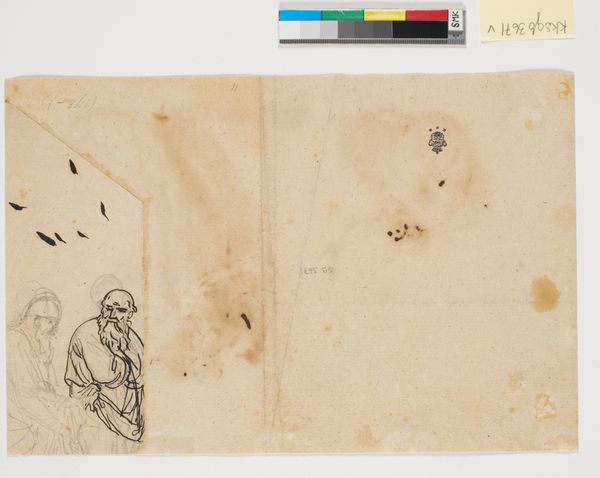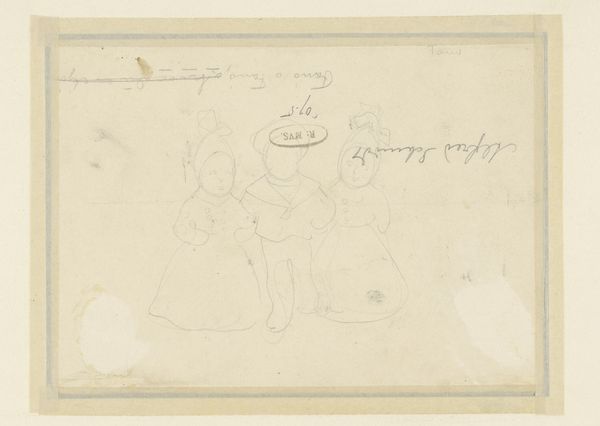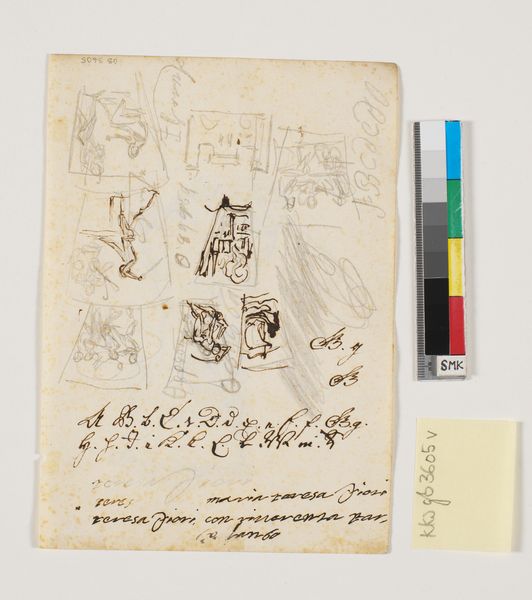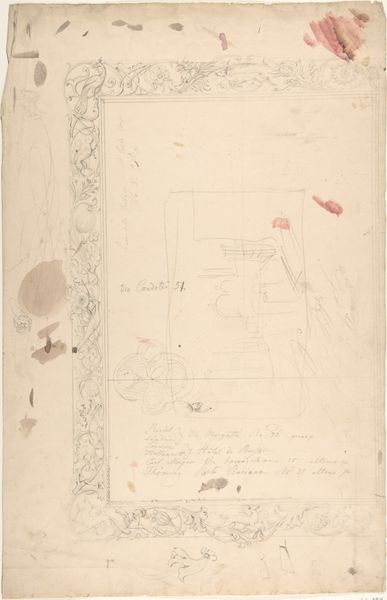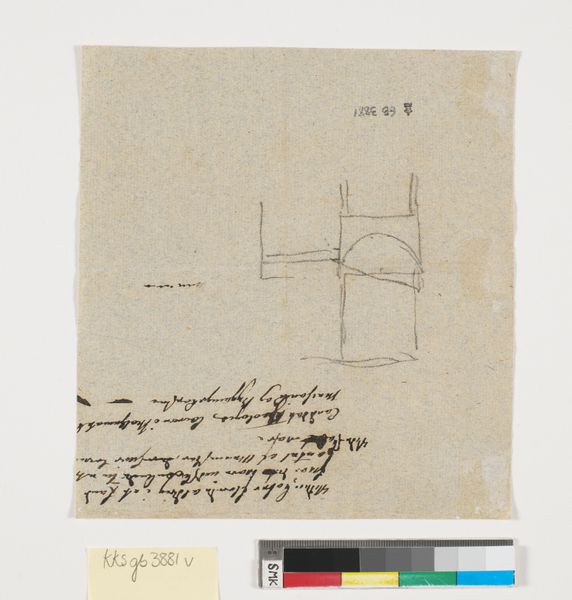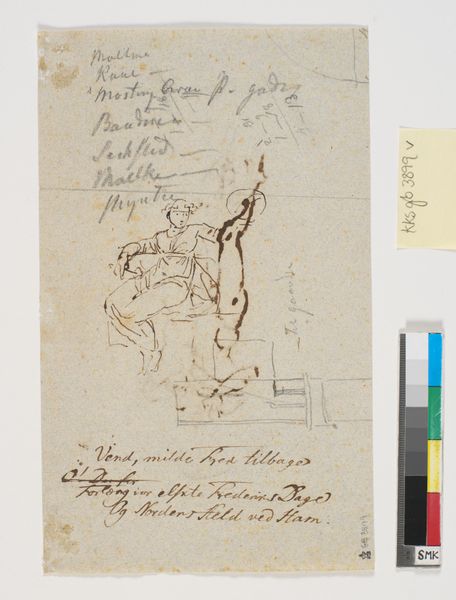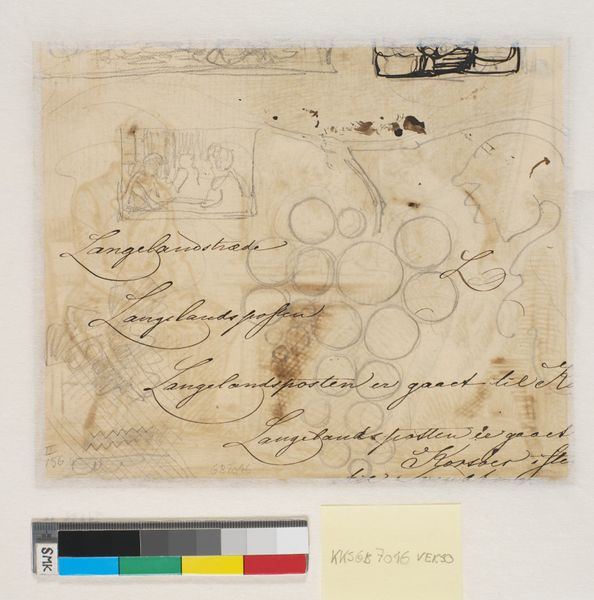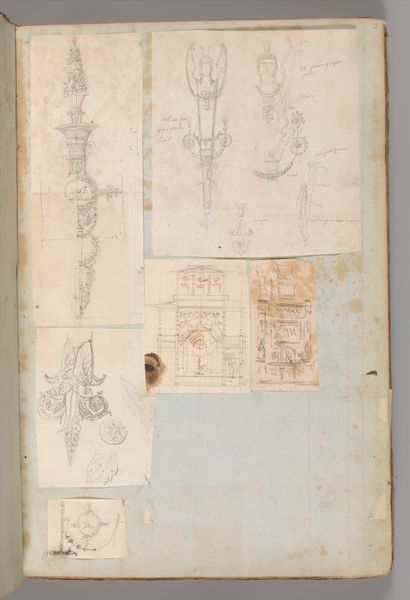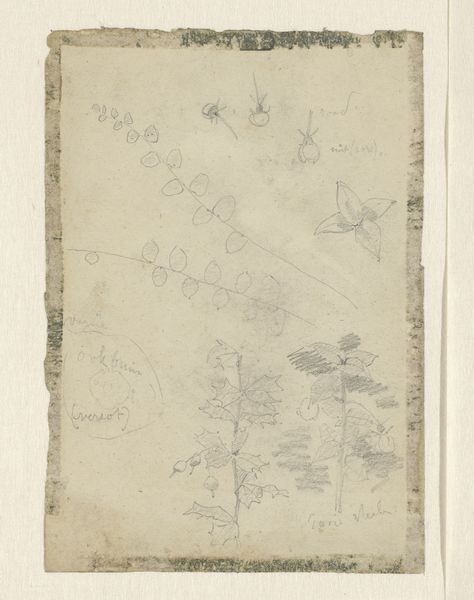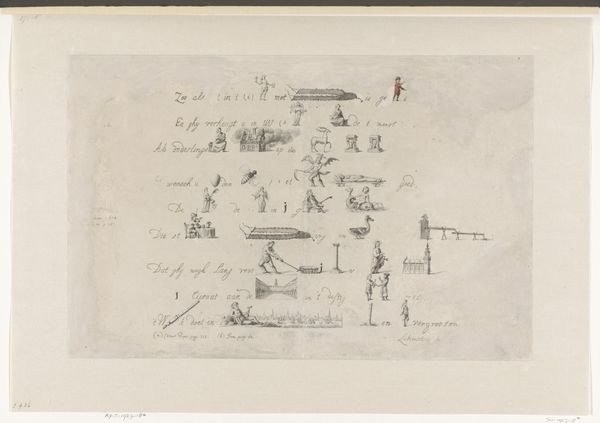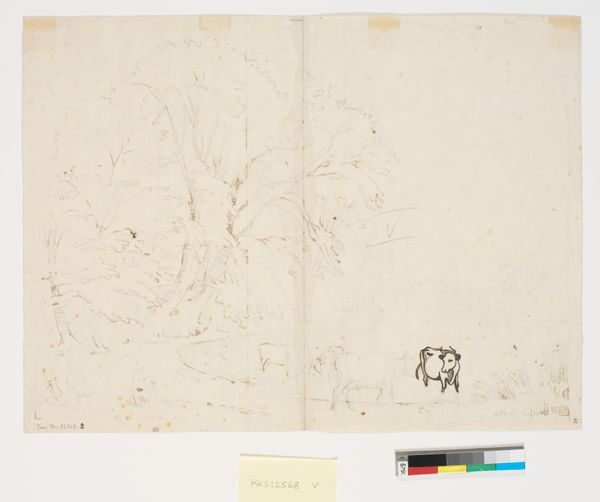![Forskellige udkast, bl.a. af flere hoveder og en høne med to [?] placeret i en cirkel by Nicolai Abildgaard](/_next/image?url=https%3A%2F%2Fd2w8kbdekdi1gv.cloudfront.net%2FeyJidWNrZXQiOiAiYXJ0ZXJhLWltYWdlcy1idWNrZXQiLCAia2V5IjogImFydHdvcmtzLzllY2Q3MDM1LTA0ZjYtNDQzYy04NmYwLWIzYWM4ZjVhZGRmMy85ZWNkNzAzNS0wNGY2LTQ0M2MtODZmMC1iM2FjOGY1YWRkZjNfZnVsbC5qcGciLCAiZWRpdHMiOiB7InJlc2l6ZSI6IHsid2lkdGgiOiAxOTIwLCAiaGVpZ2h0IjogMTkyMCwgImZpdCI6ICJpbnNpZGUifX19&w=3840&q=75)
Forskellige udkast, bl.a. af flere hoveder og en høne med to [?] placeret i en cirkel 1743 - 1809
0:00
0:00
drawing, watercolor
#
portrait
#
drawing
#
water colours
#
watercolor
Dimensions: 345 mm (height) x 222 mm (width) (bladmaal)
Editor: This sheet of studies by Nicolai Abildgaard, dating from sometime between 1743 and 1809, presents a rather quirky collection of motifs rendered in watercolor: faces, a plant, a chicken in a circle. I find myself curious about this eclectic mix. What do you see in this piece? Curator: What I see is a powerful exercise in association and recontextualization, almost like a personal symbolic dictionary. Take the circle for example; it appears twice. One iteration frames a hen – a symbol of domesticity perhaps ironically enshrined. The other, larger circle remains empty save for what appear to be spectacles: vessels for sight, containers for observation themselves echoing the larger containing circle. Abildgaard gives us the vessel, and we as viewers must determine what goes inside, if anything at all. Editor: That’s a very interesting way to put it – the chicken, those empty lenses. Why the hen specifically, and why put it in a circle? Curator: Well, think about the classical associations with animals; their characteristics projected onto human society: The cunning of the fox, the majesty of the lion. Now, consider that the hen is usually symbolic of the everyday: domesticity, sustenance, the mundane cycle of life and death. Framing this within a circle suggests it isn't just *a* hen, but *the* hen, a distilled essence of “hen-ness.” It becomes more than just poultry; it’s an icon, a potent emblem imbued with cultural weight. And of course the spectacles -- whose vision are we looking through, what biases do they introduce to the 'truth' we think we see? Editor: So it’s a way of elevating the ordinary into something symbolic? Curator: Precisely. Abildgaard is reminding us that the mundane is just as potent a vehicle for meaning as grand historical allegory. It's about decoding what a society, even a single person, deems important enough to elevate through visual language. He prompts us to think about where these symbolic resonances originate and how they continue to shape our perceptions. Editor: I never thought about a chicken in such a complex way before. It is truly fascinating how simple forms can be charged with such symbolic energy!
Comments
No comments
Be the first to comment and join the conversation on the ultimate creative platform.
